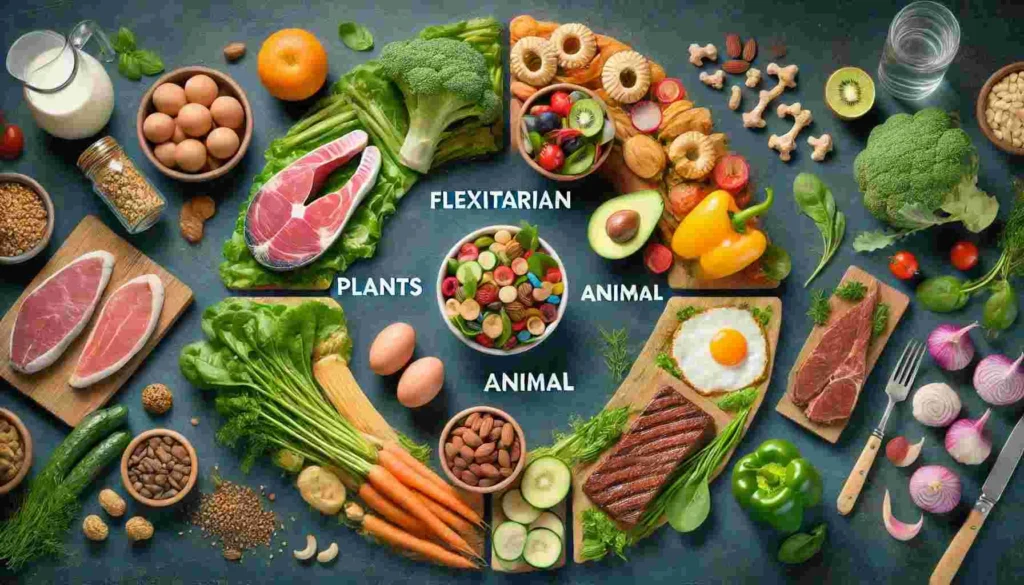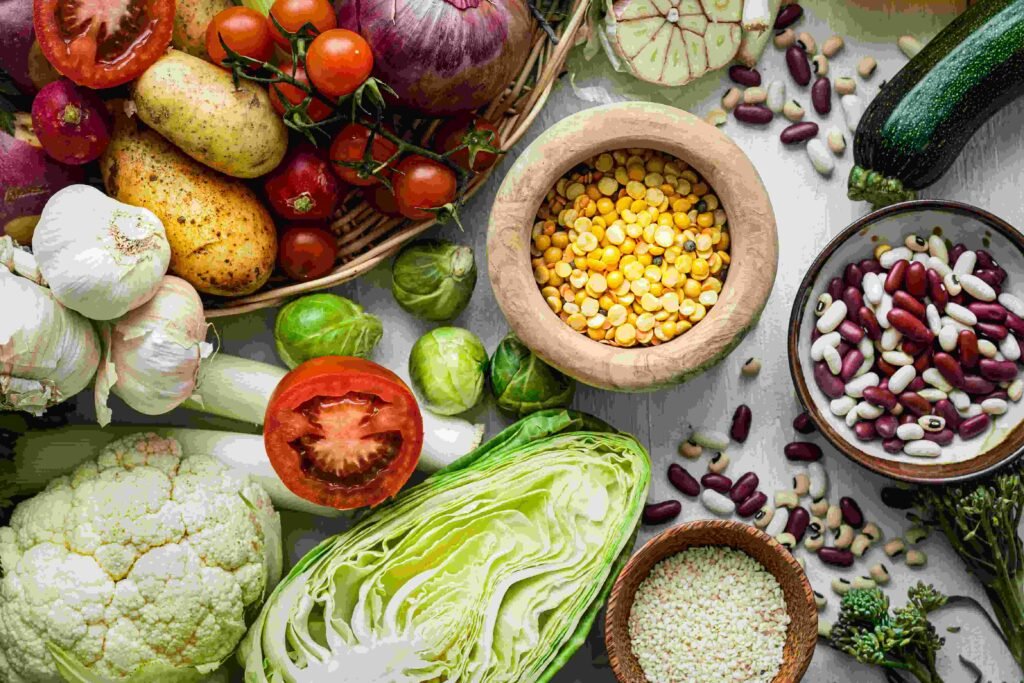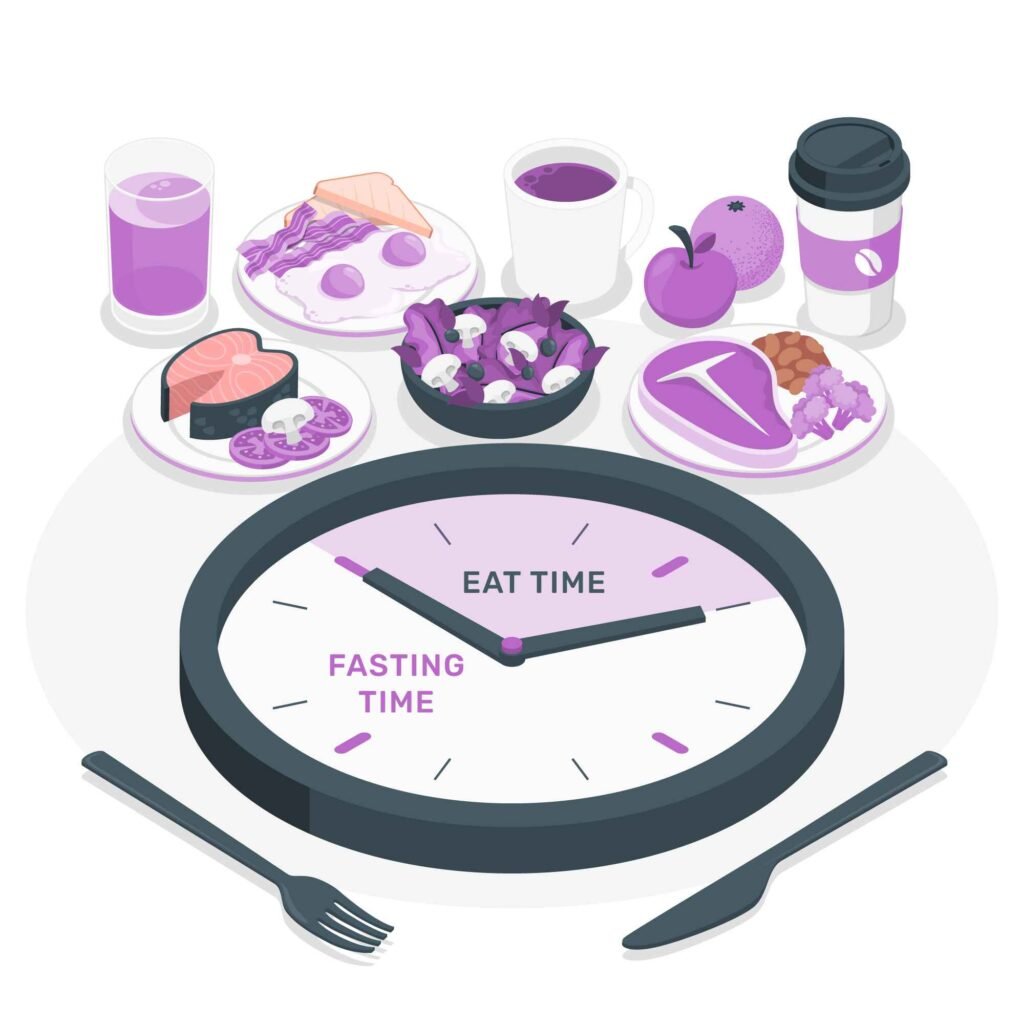
The Flexitarian Approach: Balancing Plant-Based and Animal Foods
Introduction to the Flexitarian Lifestyle
The flexitarian diet is gaining traction as a flexible, balanced way to improve health and reduce environmental impact without fully committing to vegetarianism or veganism. By prioritizing plant-based foods while still enjoying animal products in moderation, this approach offers the best of both worlds—nutritional diversity and sustainability. This blog will explore the principles, benefits, and practical tips to adopt a flexitarian lifestyle.
What is the Flexitarian Diet?
The term “flexitarian” is a blend of “flexible” and “vegetarian.” It encourages a primarily plant-based diet while allowing occasional consumption of meat, fish, and other animal products. Unlike restrictive diets, flexitarianism focuses on inclusion rather than exclusion, making it accessible and sustainable for people from all walks of life.
Key Principles of the Flexitarian Diet:
- Plant-Powered Meals: Make vegetables, fruits, legumes, and whole grains the center of your diet.
- Moderate Meat Consumption: Incorporate animal products sparingly, treating them as an occasional addition rather than a staple.
- Focus on Whole Foods: Minimize processed and packaged foods to maximize nutritional intake.
- Mindful Eating: Embrace conscious choices, considering health and environmental impacts.
Health Benefits of a Flexitarian Diet
Adopting a flexitarian diet can positively impact both physical health and overall well-being. Here are some of the top advantages:
1. Improved Heart Health A predominantly plant-based diet is rich in fiber, antioxidants, and unsaturated fats, all of which contribute to better cardiovascular health. Studies show that flexitarians have lower risks of hypertension and heart disease.
2. Weight Management Flexitarian eating naturally limits calorie-dense foods and emphasizes nutrient-rich alternatives, helping with weight control. The flexibility also makes it easier to sustain long-term.
3. Reduced Risk of Chronic Diseases Consuming more plant-based foods is linked to lower risks of diabetes, certain cancers, and metabolic syndrome. The occasional inclusion of lean proteins like fish and poultry can further enhance nutritional balance.
4. Better Gut Health Plant-based foods are packed with prebiotics and fiber, promoting a healthy gut microbiome. Adding fermented foods like yogurt or tempeh enhances digestive health.
Environmental Impact of Flexitarianism
The environmental benefits of reducing meat consumption cannot be overstated. Livestock farming is one of the leading contributors to greenhouse gas emissions, deforestation, and water pollution. By eating less meat and more plant-based meals, flexitarians significantly reduce their carbon footprint.
1. Lower Greenhouse Gas Emissions Producing plant-based foods generates fewer emissions compared to animal farming. A flexitarian diet supports sustainability by reducing demand for resource-intensive animal agriculture.
2. Conservation of Water and Land It takes significantly less water to grow plants than to raise livestock. Moreover, shifting toward plant-based diets can help conserve land used for grazing and feed production.
3. Reduced Waste Flexitarianism often encourages buying local and fresh produce, reducing reliance on heavily packaged and processed foods that contribute to pollution.
Practical Tips to Transition to a Flexitarian Diet
Making the switch to a flexitarian lifestyle doesn’t have to be overwhelming. Here are actionable steps to help you get started:
1. Start with Meatless Days Dedicate specific days of the week to plant-based meals. “Meatless Mondays” is a popular choice that can help ease into the habit.
2. Explore Plant-Based Proteins Incorporate protein-rich options like beans, lentils, tofu, tempeh, and nuts. These alternatives provide essential nutrients while reducing meat consumption.
3. Experiment with Recipes Discovering new recipes is key to enjoying a flexitarian diet. Try veggie stir-fries, quinoa salads, or lentil curries for delicious and satisfying meals.
4. Choose Quality Over Quantity When consuming animal products, opt for high-quality, ethically sourced options such as free-range eggs, grass-fed meat, or sustainably caught fish.
The Flexitarian Approach: Balancing Plant-Based and Animal Foods
How to Create Balanced Flexitarian Meals
Embracing the flexitarian lifestyle means designing meals that are rich in plant-based nutrients while incorporating animal products thoughtfully. Creating balanced meals ensures you’re meeting your nutritional needs without compromising on flavor or satisfaction. Here’s a practical guide to crafting flexitarian-friendly dishes.
1. Follow the 70/30 Rule
Aim for 70% of your plate to consist of plant-based foods like vegetables, grains, and legumes. The remaining 30% can include animal products like lean meats, eggs, or dairy. This simple ratio helps you balance your diet without eliminating food groups.
2. Incorporate a Variety of Colors
A colorful plate is a healthy plate! Different colors in fruits and vegetables often indicate different nutrients. For example:
- Red: Tomatoes, bell peppers, strawberries (rich in antioxidants like lycopene).
- Green: Broccoli, spinach, kale (loaded with vitamins and minerals).
- Orange and Yellow: Carrots, sweet potatoes, oranges (high in beta-carotene and vitamin C).
This variety ensures you’re getting a wide range of nutrients and keeps meals visually appealing.
3. Prioritize Whole Grains
Replace refined grains with whole-grain alternatives such as quinoa, brown rice, barley, or whole-wheat pasta. Whole grains provide fiber, which promotes digestive health and keeps you fuller for longer. They also help balance blood sugar levels.
4. Include Healthy Fats
Healthy fats are essential for brain health, heart health, and nutrient absorption. Incorporate sources like:
- Avocados
- Nuts and seeds
- Olive oil
- Fatty fish (salmon, sardines)
These fats enhance the flavor of meals and provide important omega-3 and omega-6 fatty acids.
Flexitarian Protein Sources: Plant-Based and Animal Options
Protein is crucial for muscle repair, energy, and overall health. In a flexitarian diet, you can combine plant-based and animal protein sources to achieve balance.
Top Plant-Based Protein Sources:
- Legumes: Beans, lentils, and chickpeas are protein powerhouses. A cup of cooked lentils contains about 18 grams of protein.
- Tofu and Tempeh: Soy-based products like tofu and tempeh are versatile and rich in protein. They can easily be grilled, baked, or stir-fried.
- Quinoa: A complete protein with all nine essential amino acids, making it an excellent grain choice.
- Nuts and Seeds: Almonds, chia seeds, and pumpkin seeds offer protein, healthy fats, and fiber.
Animal Protein Sources to Include Sparingly:
- Poultry: Lean options like chicken and turkey breast provide high-quality protein with lower saturated fat.
- Eggs: Packed with protein and nutrients like choline, eggs are perfect for quick, balanced meals.
- Fish: Fatty fish like salmon and mackerel supply omega-3 fatty acids and protein. Aim for sustainably caught fish when possible.
- Dairy: Low-fat yogurt, milk, and cheese provide calcium and protein, essential for bone health.
Sample Flexitarian Meal Plans
If you’re wondering how to structure your meals, here’s a sample flexitarian meal plan for inspiration.
Breakfast Ideas:
- Veggie Omelet: Eggs with spinach, bell peppers, and mushrooms. Serve with whole-grain toast.
- Smoothie Bowl: Blend bananas, berries, and spinach. Top with chia seeds and a sprinkle of granola.
- Overnight Oats: Oats soaked with almond milk, topped with walnuts, apple slices, and cinnamon.
Lunch Ideas:
- Quinoa Salad: Quinoa, black beans, cherry tomatoes, avocado, and a squeeze of lime.
- Grilled Chicken Wrap: Whole-wheat wrap with grilled chicken, lettuce, cucumber, and hummus.
- Lentil Soup: Hearty lentil and vegetable soup served with a side of crusty bread.
Dinner Ideas:
- Stir-Fried Tofu and Vegetables: Sauté tofu, broccoli, and carrots with soy sauce and ginger. Serve over brown rice.
- Baked Salmon: Baked salmon fillet with roasted sweet potatoes and steamed asparagus.
- Bean Tacos: Black bean and corn tacos topped with avocado and fresh salsa.
Overcoming Common Flexitarian Challenges
While the flexitarian diet is flexible and adaptable, some challenges may arise. Here’s how to address them effectively.
1. Finding Plant-Based Protein Alternatives
It can be tricky to replace the protein found in meat. Diversify your protein sources by incorporating legumes, tofu, tempeh, and quinoa regularly. Combining different plant-based proteins ensures you get all essential amino acids.
2. Meal Planning for Busy Schedules
Planning ahead makes it easier to stick to flexitarian principles. Prepare batch meals like soups, salads, and grain bowls on the weekend to save time during the week.
3. Balancing Nutrients
Ensure you’re getting enough iron, vitamin B12, and omega-3 fatty acids. Consider fortified foods or supplements if needed, especially if you’re reducing red meat consumption.
4. Eating Out
Many restaurants now offer plant-based or flexitarian-friendly options. Opt for dishes featuring vegetables, legumes, and whole grains, and choose smaller portions of meat when available.
The Flexitarian Mindset: A Sustainable, Lifelong Approach
Flexitarianism isn’t just a diet; it’s a mindset that embraces balance, health, and sustainability. Unlike restrictive eating plans, the flexitarian approach allows you to enjoy the foods you love while making conscious choices that benefit your well-being and the planet.
Key Takeaways for a Successful Flexitarian Journey:
- Be Flexible: There’s no “right” way to be flexitarian. Adapt the diet to fit your lifestyle and preferences.
- Focus on Progress, Not Perfection: Small changes over time can lead to significant health and environmental benefits.
- Stay Curious: Experiment with new plant-based recipes and cuisines to keep your meals exciting.
The Flexitarian Approach: Balancing Plant-Based and Animal Foods
Practical Tips for Long-Term Flexitarian Success
Maintaining a flexitarian lifestyle is all about balance, creativity, and consistency. The beauty of this approach lies in its flexibility, which makes it more sustainable than restrictive diets. To make your flexitarian journey enjoyable and successful, here are practical tips you can incorporate into your everyday routine.
1. Plan Your Meals Ahead of Time
Meal planning is crucial for staying on track. Each week, plan a mix of plant-based and occasional meat-based meals. Having a plan reduces last-minute decisions that might lead to unhealthy choices.
- Weekly Prep: Prepare batches of beans, grains, and vegetables to make assembling meals quicker.
- Theme Days: Introduce themed days like “Meatless Mondays,” “Taco Tuesdays,” or “Stir-Fry Fridays” for structure and fun.
2. Stock Your Pantry with Flexitarian Staples
A well-stocked pantry ensures you’re always prepared to whip up a healthy meal. Keep a balance of plant-based and versatile ingredients on hand.
- Plant-Based Staples: Lentils, beans, chickpeas, quinoa, whole grains, canned tomatoes, nuts, seeds, and plant-based milk.
- Animal Product Staples: Eggs, yogurt, canned fish (tuna, salmon), and frozen lean meats like chicken or turkey.
3. Explore Global Cuisines for Inspiration
Many global cuisines naturally lean toward plant-based eating. Exploring these cultures can give you fresh ideas for meals and new flavor profiles.
- Mediterranean: Chickpea salads, hummus, falafel, and grilled vegetables.
- Asian: Tofu stir-fries, miso soup, and vegetable dumplings.
- Mexican: Bean tacos, veggie quesadillas, and rice bowls.
- Indian: Lentil curries, vegetable biryani, and chickpea stews.
4. Get Creative with Substitutions
You don’t need to give up your favorite dishes—just modify them! Experiment with plant-based substitutions to create healthier, flexitarian versions.
- Replace Ground Meat: Use lentils or mushrooms in pasta sauces or tacos.
- Swap Dairy: Try plant-based milk in smoothies or coffee.
- Alternative Proteins: Use tofu, tempeh, or jackfruit in place of meat in stir-fries and curries.
Flexitarian Diet and Family-Friendly Eating
Adopting a flexitarian lifestyle can benefit the whole family, promoting healthier habits while still offering flexibility. Here’s how to make the flexitarian approach work for everyone in your household.
1. Involve the Kids
Get children excited about healthy eating by involving them in meal preparation. Let them choose vegetables for the week or help with simple tasks like washing produce or assembling salads.
- Tip: Create a “build-your-own” meal night, like taco bowls or stir-fry, where each family member can customize their plate with various plant-based toppings.
2. Make Plant-Based Dishes Kid-Friendly
Sometimes kids are wary of vegetables. Make plant-based meals more appealing by using familiar flavors and fun presentations.
- Ideas:
- Veggie Nuggets: Use mashed chickpeas and sweet potatoes to create nuggets.
- Smoothies: Blend spinach, bananas, and berries for a tasty, nutrient-packed drink.
- Pasta with Hidden Veggies: Add pureed vegetables like carrots or zucchini to tomato sauce.
3. Balance Preferences
Not everyone in the family may want to give up meat entirely, and that’s okay. Serve plant-based meals regularly while offering meat or fish options on the side for those who prefer them.
Health Considerations in a Flexitarian Diet
A flexitarian diet offers a balanced approach to nutrition, but it’s important to ensure you’re meeting all your health needs. Here are some key considerations to keep in mind.
1. Ensure Sufficient Protein Intake
Even with a plant-forward approach, getting enough protein is essential. Combine plant-based proteins throughout the day to ensure you’re meeting your needs.
- Example: Pair beans with rice, or add nuts and seeds to your salads.
2. Monitor Iron Levels
Plant-based iron sources (non-heme iron) are less readily absorbed than animal-based sources. To boost iron absorption, pair iron-rich foods like spinach, beans, and lentils with vitamin C-rich foods like citrus fruits, tomatoes, or bell peppers.
3. Get Enough Vitamin B12
Vitamin B12 is primarily found in animal products. If you’re cutting back on meat significantly, incorporate fortified plant-based foods like cereals, plant milks, or consider a B12 supplement.
4. Omega-3 Fatty Acids
If you’re reducing your intake of fatty fish, include plant-based omega-3 sources such as flaxseeds, chia seeds, walnuts, and hemp seeds to maintain optimal brain and heart health.
Flexitarian Diet: Addressing Common Myths
As with any diet, there are misconceptions about flexitarianism. Let’s address some of the most common myths.
Myth 1: Flexitarianism is Just “Cheating” on Vegetarianism
Reality: Flexitarianism isn’t about “cheating”; it’s about flexibility. It allows you to prioritize plants while still enjoying the occasional inclusion of animal products without guilt.
Myth 2: It’s Hard to Get Enough Protein
Reality: Flexitarians have access to a wide range of protein sources, from beans and tofu to eggs and lean meats. Combining plant and animal proteins ensures adequate intake.
Myth 3: Flexitarian Diets are Expensive
Reality: Plant-based staples like beans, grains, and vegetables are often more affordable than meat. Reducing meat consumption can actually lower grocery costs.
Myth 4: It’s Complicated to Follow
Reality: The beauty of the flexitarian diet is its simplicity. There are no strict rules—just guidelines to encourage more plant-based eating.
Flexitarianism and Sustainable Living
One of the most compelling reasons to embrace a flexitarian diet is its positive impact on the environment. Eating less meat reduces your carbon footprint and supports more sustainable food systems.
1. Supporting Ethical Farming
Choosing high-quality, ethically sourced meat supports farmers who practice sustainable agriculture and humane animal treatment.
2. Reducing Food Waste
Flexitarians often rely on fresh produce and bulk grains, reducing the need for heavily packaged foods. Cooking at home helps minimize food waste by using ingredients efficiently.
3. Promoting Biodiversity
Plant-based eating supports crop diversity and sustainable farming practices. This helps protect ecosystems and reduce monoculture farming, which depletes soil health.



